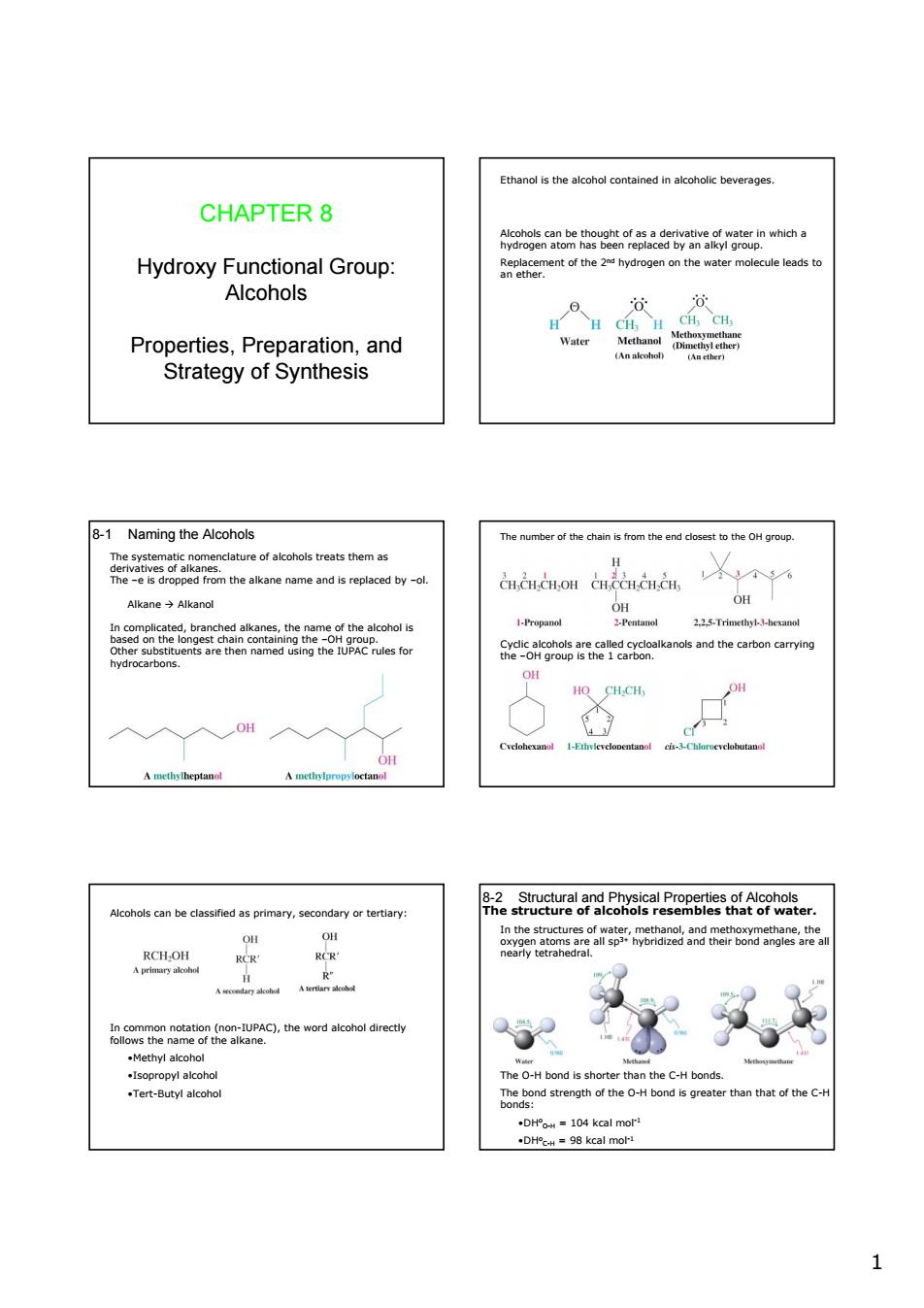正在加载图片...

Ethanol is the alcohol contained in alcoholic beverages. CHAPTER 8 Hydroxy Functional Group: Alcohols Properties,Preparation,and 公兰会 Strategy of Synthesis 8-1 Naming the Alcohols dature of alcohols treats them as OH 1-Propandd .5.Triaeth -3-a 8oagareleohakanetandteabonann HO CHCH, 1-Ets Nlcohols can be classified as primary,secondary or tertiary a.sheb28sGo6tes5setooer o860s6a RCH.OH The bond than that o时the 104 kcal 1 1 CHAPTER 8 Hydroxy Functional Group: Alcohols Properties, Preparation, and Strategy of Synthesis Ethanol is the alcohol contained in alcoholic beverages. Yeast enzymes C H O 2 CH CH OH + 2 CO 6 12 6 3 2 2 ⎯⎯⎯⎯⎯→ Alcohols can be thought of as a derivative of water in which a hydrogen atom has been replaced by an alkyl group. Replacement of the 2nd hydrogen on the water molecule leads to an ether. 8-1 Naming the Alcohols The systematic nomenclature of alcohols treats them as derivatives of alkanes. The –e is dropped from the alkane name and is replaced by –ol. Alkane Æ Alkanol In complicated, branched alkanes, the name of the alcohol is based on the longest chain containing the –OH group. Other substituents are then named using the IUPAC rules for hydrocarbons. The number of the chain is from the end closest to the OH group. Cyclic alcohols are called cycloalkanols and the carbon carrying the –OH group is the 1 carbon. Alcohols can be classified as primary, secondary or tertiary: In common notation (non-IUPAC), the word alcohol directly follows the name of the alkane. •Methyl alcohol •Isopropyl alcohol •Tert-Butyl alcohol 8-2 Structural and Physical Properties of Alcohols The structure of alcohols resembles that of water. In the structures of water, methanol, and methoxymethane, the oxygen atoms are all sp3+ hybridized and their bond angles are all nearly tetrahedral. The O-H bond is shorter than the C-H bonds. The bond strength of the O-H bond is greater than that of the C-H bonds: •DHo O-H = 104 kcal mol-1 •DHo C-H = 98 kcal mol-1